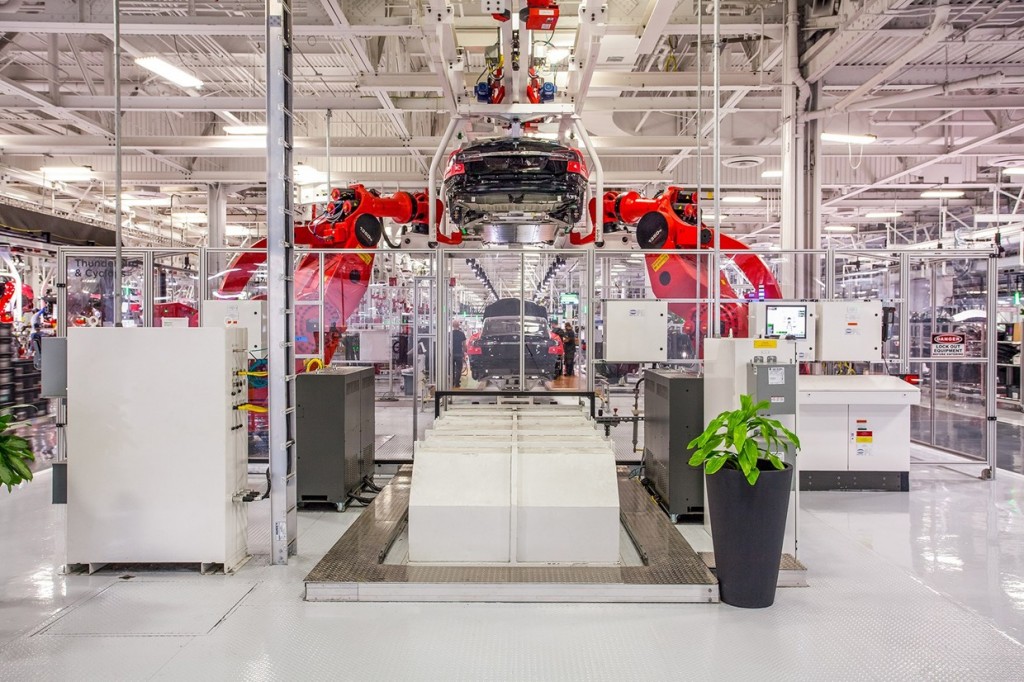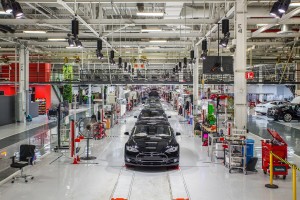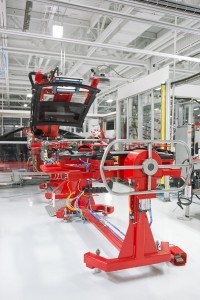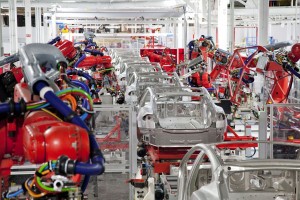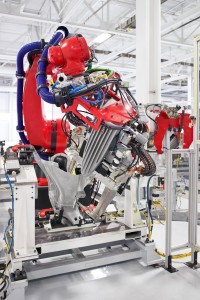Investor's Corner
Wired Takes a Tesla Factory Tour with Diarmuid O’Connell
Wired got a tour of the Tesla factory recently in the company of Diarmuid O’Connell, vice president of business development. The tour turned into a discussion of the core values that are the foundation of everything Tesla does.
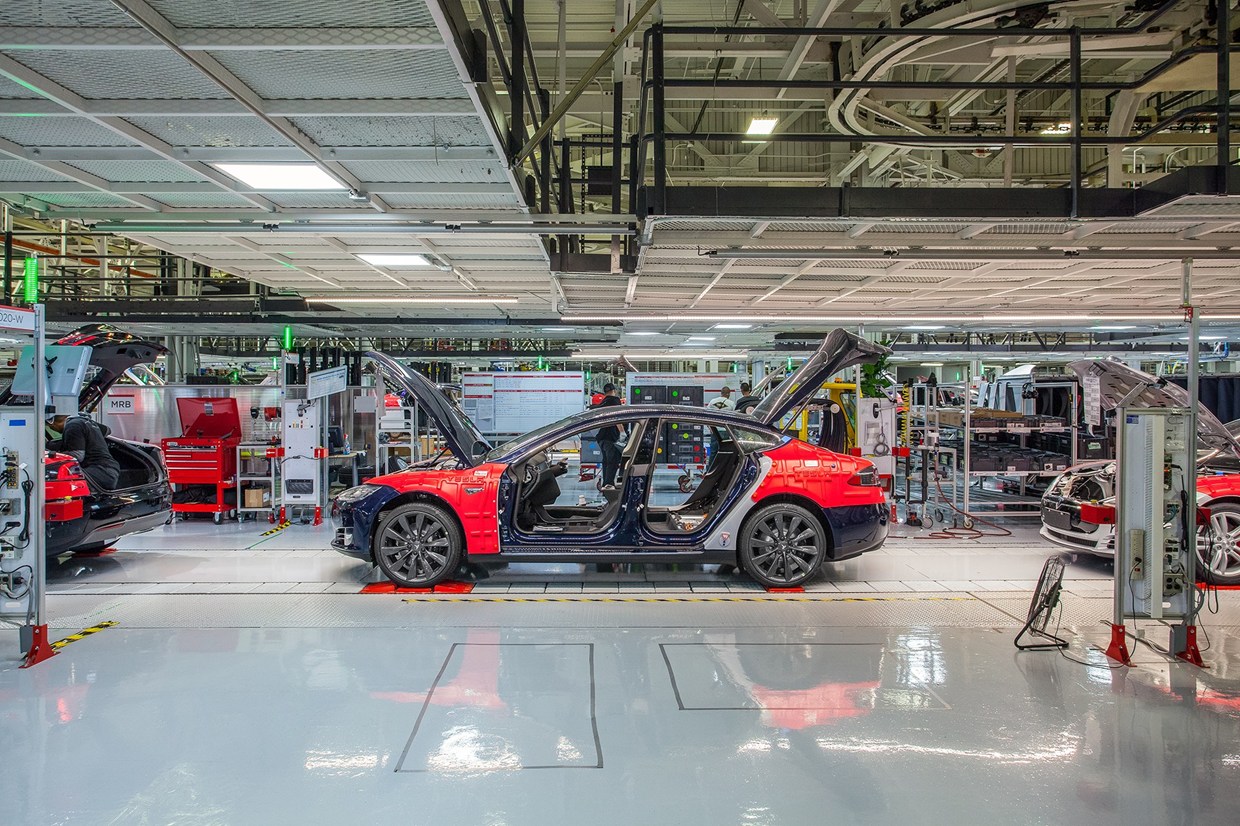
Wired UK editor Michael Rundle recounts his recent tour of the Tesla factory with Vice President of Business Development, Diarmuid O’Connell. What started off as a jaunt through the factory soon became a deep dive into the philosophy that underpins everything Tesla stands for.
O’Connell was the 50th person hired by Tesla and the first who was not a trained engineer. He is a firm believer in the gospel according to Musk, but he is far from the only one. As reported by Wired UK, one company staffer was overheard during the tour saying the company’s mission is to discomfort “petrodictators.”
O’Connell starts off by telling Rundle that Tesla is not in the business of making automobiles. “Tesla is in the business of inspiring competition. The more electric vehicles the better.” Then he adds, “It would be a fulfillment of our mission if the biggest manufacturer in the US put a mass-market EV on the road. We’re hopeful that they will and frankly that everyone else does.”
He suggests that Tesla is bent on securing the future of “sustainable transport” as a whole, not just making a profit. If it can establish that EVs are viable, more cars, more charging infrastructure, more battery research and development, more greening of the electrical greed, and a reduced dependence on foreign oil will follow, Tesla will make money. But if Tesla loses its bet on the future, not only will it fail, but the environment and the world will lose as well.
For those who criticize the company for being slow to get its products to market, O’Connell has an answer. “If we had been able to produce [the Model S] out of the box 12 years ago, we would have done so. We had no brand, no capital, no manufacturing base and no developed technology,” he says. “This is the classic technology introduction model that has led to the mass market for everything from air travel to cell phones. … This is how you do it if you’re starting from zero.”
Tesla relies too much on government subsidies and the sale of emissions credits, some critics charge. O’Connell has an answer for that too. The oil and gas industries receive “$2 trillion in global subsidies” every year, he points out, but he saves his most severe criticism for “the $25 billion R&D tax credit that Exxon Mobile and some of the other big American gasoline petroleum producers still enjoy 120 years into the development of that technology.” Why doesn’t the press talk about that, he wonders?
Asked about how autonomous cars and ride sharing may affect the environment going forward, he says, “I think what’s important is the emissions profile of any car, whether it’s shared or owned. Big or small. We’re trying to move as quickly as possible where the emissions profile of a vehicle is zero, and the emissions profile of the original electron going into the vehicle is as close to zero as possible.”
As Tesla expands its markets to other countries, it will source as many components as possible from local sources. That includes building more Gigafactories nearby, whether in Europe, China, Japan or any other country. Doing so is only common sense, he argues.
With all the buzz about the Chevy Bolt, new competition from Faraday Future, Atieva, NextEV, BYD and BAIC, O’Connell takes a “What have you done for me lately?” attitude. “The path of getting there — that’s the question. And the promise of doing something two- and three- and four years hence do not impress me,” O’Connell says. “People doing stuff now? That impresses me.”
Finally, O’Connell gets down the bottom line, the real nitty gritty, the foundation Tesla is built on. “[Y]ou also have to put on the table how are we as a society thinking about larger issues, and moving ourselves towards taking other than strictly market oriented actions, to deliver public health benefits,” he says. “Maybe survival [depends] on how you think about carbon intensity and the logical progression of too much carbon in our atmosphere.”
There a lot of people who think a social conscience is not the proper role of business. It’s not the capitalist model they teach in business school. Some would go so far as to say Tesla is foolish for letting such considerations as respect for the earth color its business plans and detract from the quest for profits.
Maybe so, but if you listen to Diarmuid O’Connell, who obviously gets his convictions from Elon Musk himself, someday in the not too distant future, we will find out who is foolish…..and who are really the fools.
Photo credits: Tesla

Investor's Corner
Tesla stock closes at all-time high on heels of Robotaxi progress

Tesla stock (NASDAQ: TSLA) closed at an all-time high on Tuesday, jumping over 3 percent during the day and finishing at $489.88.
The price beats the previous record close, which was $479.86.
Shares have had a crazy year, dipping more than 40 percent from the start of the year. The stock then started to recover once again around late April, when its price started to climb back up from the low $200 level.
This week, Tesla started to climb toward its highest levels ever, as it was revealed on Sunday that the company was testing driverless Robotaxis in Austin. The spike in value pushed the company’s valuation to $1.63 trillion.
Tesla Robotaxi goes driverless as Musk confirms Safety Monitor removal testing
It is the seventh-most valuable company on the market currently, trailing Nvidia, Apple, Alphabet (Google), Microsoft, Amazon, and Meta.
Shares closed up $14.57 today, up over 3 percent.
The stock has gone through a lot this year, as previously mentioned. Shares tumbled in Q1 due to CEO Elon Musk’s involvement with the Department of Government Efficiency (DOGE), which pulled his attention away from his companies and left a major overhang on their valuations.
However, things started to rebound halfway through the year, and as the government started to phase out the $7,500 tax credit, demand spiked as consumers tried to take advantage of it.
Q3 deliveries were the highest in company history, and Tesla responded to the loss of the tax credit with the launch of the Model 3 and Model Y Standard.
Additionally, analysts have announced high expectations this week for the company on Wall Street as Robotaxi continues to be the focus. With autonomy within Tesla’s sights, things are moving in the direction of Robotaxi being a major catalyst for growth on the Street in the coming year.
Elon Musk
Tesla needs to come through on this one Robotaxi metric, analyst says
“We think the key focus from here will be how fast Tesla can scale driverless operations (including if Tesla’s approach to software/hardware allows it to scale significantly faster than competitors, as the company has argued), and on profitability.”

Tesla needs to come through on this one Robotaxi metric, Mark Delaney of Goldman Sachs says.
Tesla is in the process of rolling out its Robotaxi platform to areas outside of Austin and the California Bay Area. It has plans to launch in five additional cities, including Houston, Dallas, Miami, Las Vegas, and Phoenix.
However, the company’s expansion is not what the focus needs to be, according to Delaney. It’s the speed of deployment.
The analyst said:
“We think the key focus from here will be how fast Tesla can scale driverless operations (including if Tesla’s approach to software/hardware allows it to scale significantly faster than competitors, as the company has argued), and on profitability.”
Profitability will come as the Robotaxi fleet expands. Making that money will be dependent on when Tesla can initiate rides in more areas, giving more customers access to the program.
There are some additional things that the company needs to make happen ahead of the major Robotaxi expansion, one of those things is launching driverless rides in Austin, the first city in which it launched the program.
This week, Tesla started testing driverless Robotaxi rides in Austin, as two different Model Y units were spotted with no occupants, a huge step in the company’s plans for the ride-sharing platform.
Tesla Robotaxi goes driverless as Musk confirms Safety Monitor removal testing
CEO Elon Musk has been hoping to remove Safety Monitors from Robotaxis in Austin for several months, first mentioning the plan to have them out by the end of 2025 in September. He confirmed on Sunday that Tesla had officially removed vehicle occupants and started testing truly unsupervised rides.
Although Safety Monitors in Austin have been sitting in the passenger’s seat, they have still had the ability to override things in case of an emergency. After all, the ultimate goal was safety and avoiding any accidents or injuries.
Goldman Sachs reiterated its ‘Neutral’ rating and its $400 price target. Delaney said, “Tesla is making progress with its autonomous technology,” and recent developments make it evident that this is true.
Investor's Corner
Tesla gets bold Robotaxi prediction from Wall Street firm
Last week, Andrew Percoco took over Tesla analysis for Morgan Stanley from Adam Jonas, who covered the stock for years. Percoco seems to be less optimistic and bullish on Tesla shares, while still being fair and balanced in his analysis.

Tesla (NASDAQ: TSLA) received a bold Robotaxi prediction from Morgan Stanley, which anticipates a dramatic increase in the size of the company’s autonomous ride-hailing suite in the coming years.
Last week, Andrew Percoco took over Tesla analysis for Morgan Stanley from Adam Jonas, who covered the stock for years. Percoco seems to be less optimistic and bullish on Tesla shares, while still being fair and balanced in his analysis.
Percoco dug into the Robotaxi fleet and its expansion in the coming years in his latest note, released on Tuesday. The firm expects Tesla to increase the Robotaxi fleet size to 1,000 vehicles in 2026. However, that’s small-scale compared to what they expect from Tesla in a decade.
Tesla expands Robotaxi app access once again, this time on a global scale
By 2035, Morgan Stanley believes there will be one million Robotaxis on the road across multiple cities, a major jump and a considerable fleet size. We assume this means the fleet of vehicles Tesla will operate internally, and not including passenger-owned vehicles that could be added through software updates.
He also listed three specific catalysts that investors should pay attention to, as these will represent the company being on track to achieve its Robotaxi dreams:
- Opening Robotaxi to the public without a Safety Monitor. Timing is unclear, but it appears that Tesla is getting closer by the day.
- Improvement in safety metrics without the Safety Monitor. Tesla’s ability to improve its safety metrics as it scales miles driven without the Safety Monitor is imperative as it looks to scale in new states and cities in 2026.
- Cybercab start of production, targeted for April 2026. Tesla’s Cybercab is a purpose-built vehicle (no steering wheel or pedals, only two seats) that is expected to be produced through its state-of-the-art unboxed manufacturing process, offering further cost reductions and thus accelerating adoption over time.
Robotaxi stands to be one of Tesla’s most significant revenue contributors, especially as the company plans to continue expanding its ride-hailing service across the world in the coming years.
Its current deployment strategy is controlled and conservative to avoid any drastic and potentially program-ruining incidents.
So far, the program, which is active in Austin and the California Bay Area, has been widely successful.
